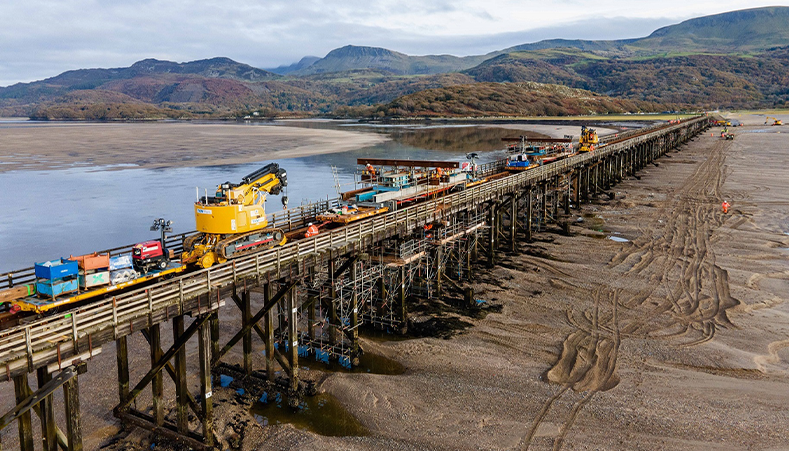
- Project
- Barmouth, Wales
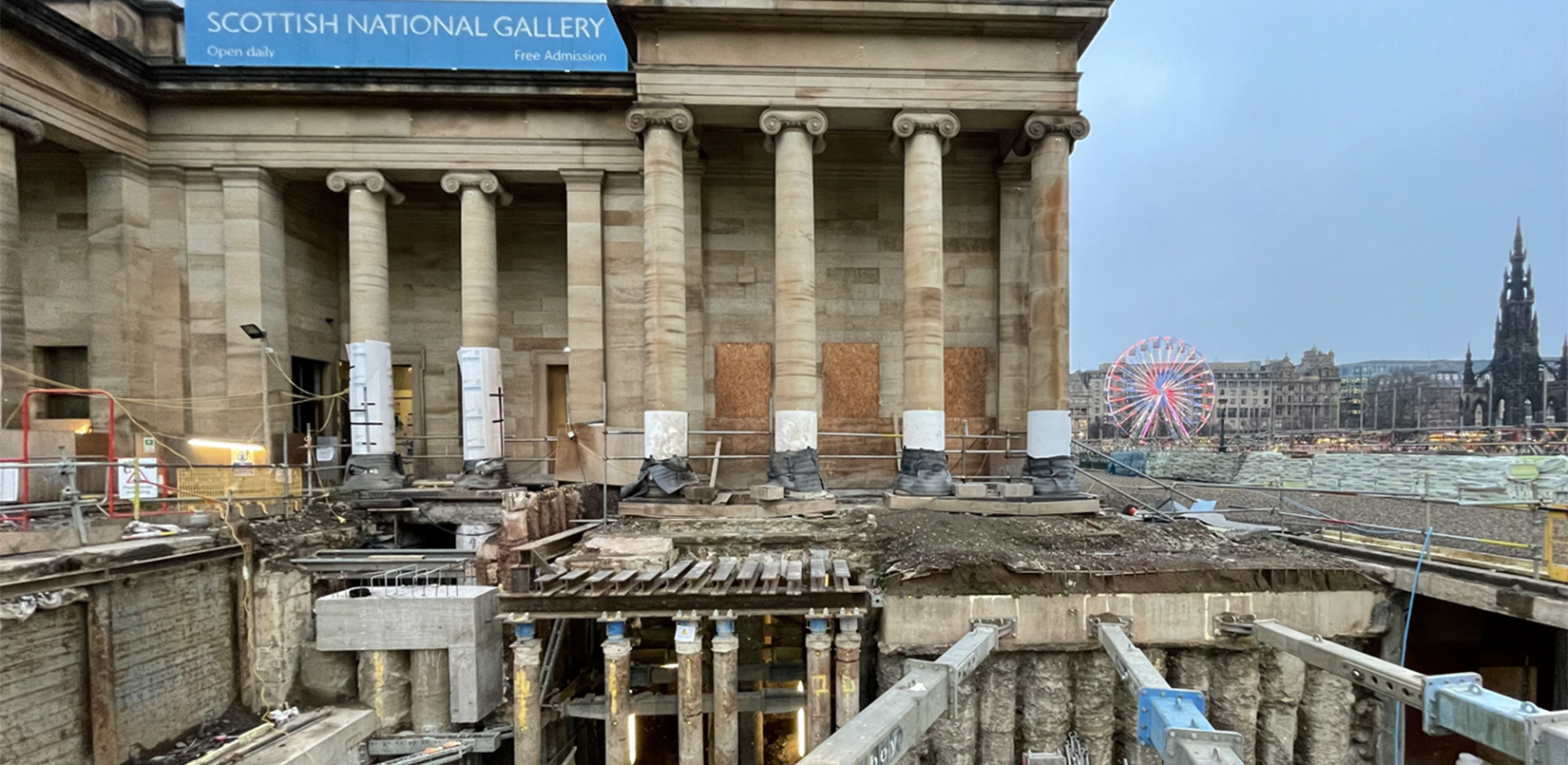
Scottish Galleries at the National, Edinburgh
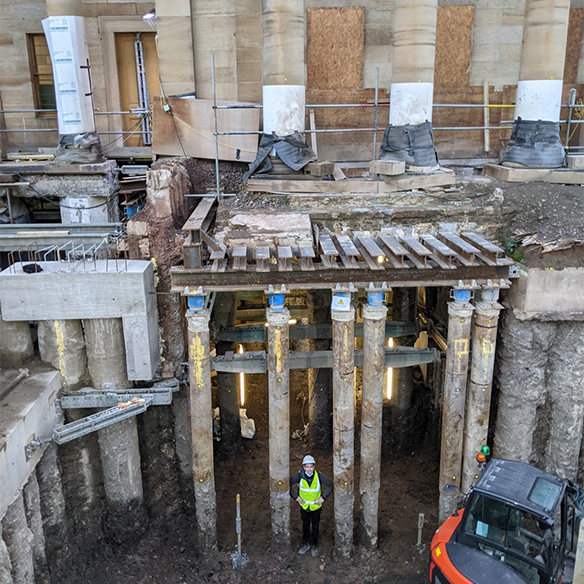
| Location |
|
|---|---|
| Sector | Building |
| Products |
When new and improved access routes, linking existing and new spaces, were to be installed underneath the National in Edinburgh, as part of a wider £38.2m investment, it was critical that the building was kept structurally safe and fully open to visitors during the works. As a result, contractor Tilbury Douglas turned to us and our range of monitoring solutions and temporary works equipment for support.
Mabey Hire was brought onto the project following a recommendation from Core Drilling Specialists to deliver an integrated propping, jacking, and monitoring solution. Their bespoke real-time hydraulic jacking and monitoring system measured load and displacement with exceptional precision, ensuring the Grade A-listed façade remained within strict tolerance limits throughout tunnelling works.
Working closely with Arup and Tilbury Douglas, Mabey Hire’s monitoring team developed a tailored methodology using a variety of sensors to track building movement, noise, and structural loads in real time. The zero-movement hydraulic system was used to pre-load and stabilise the temporary works, providing complete assurance that the historic structure would remain protected during the excavation.
View Structural Monitoring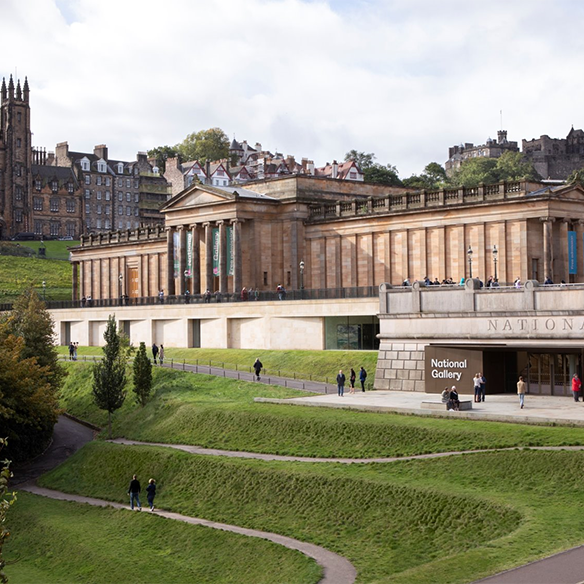
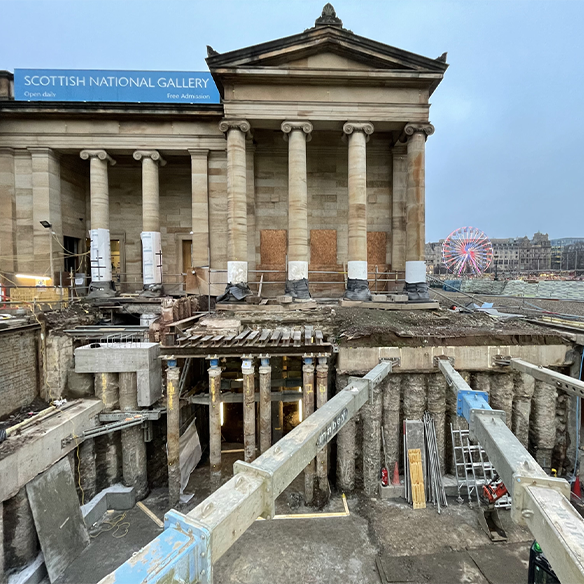
Space constraints presented another major challenge, as the works were carried out in extremely confined conditions beneath the gallery. Mabey Hire’s lightweight, modular propping and jacking systems proved ideal for this environment, as they could be easily assembled and positioned by hand or with small lifting equipment.
Their compact, non-intrusive monitoring units also allowed seamless integration with other site activities. The collaborative and responsive support from Mabey Hire’s team throughout the project helped streamline operations, ensuring safety, accuracy, and efficiency while preserving one of Edinburgh’s most significant heritage buildings.
Get in touch
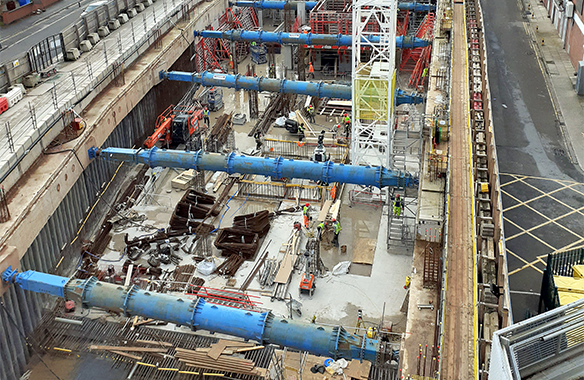
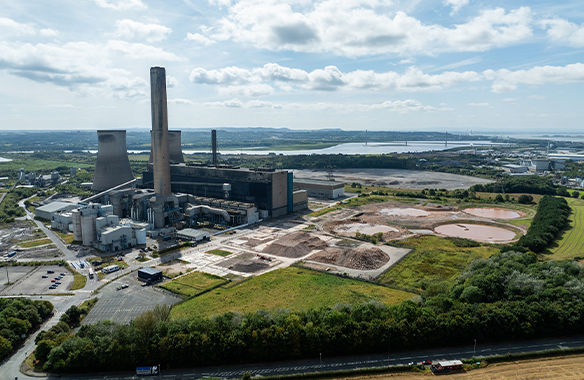
For all project specific design and technical enquiries, please contact your local service team

If you want to talk to us about your project, send us an email and a brief outline of how we can help and we’ll be in touch
[email protected]
“Working with Mabey Hire made our role on the project that much easier, with its knowledgeable and helpful team always on hand to help with any issues we encountered. It was particularly valuable that Mabey Hire was able to provide all the equipment to support our works, from the propping and jacking to the structural monitoring support.”